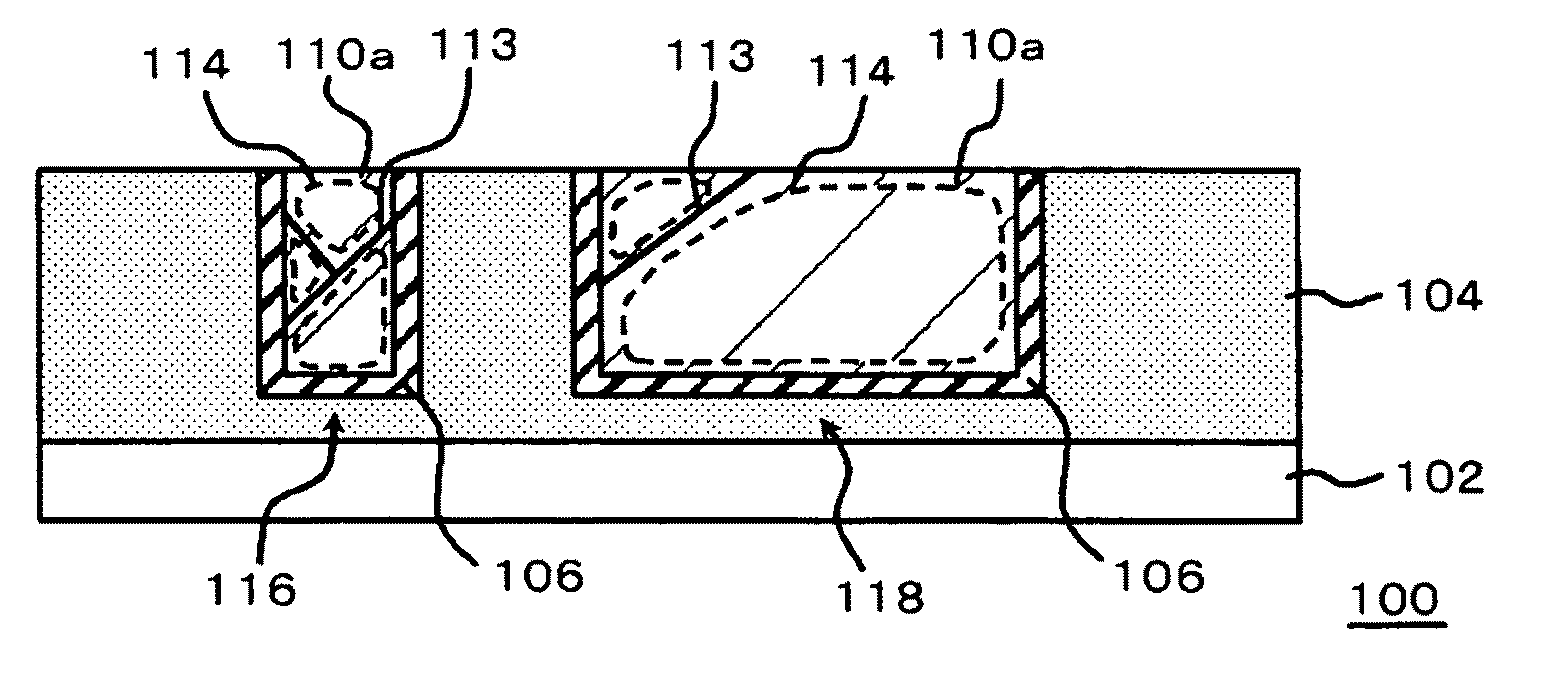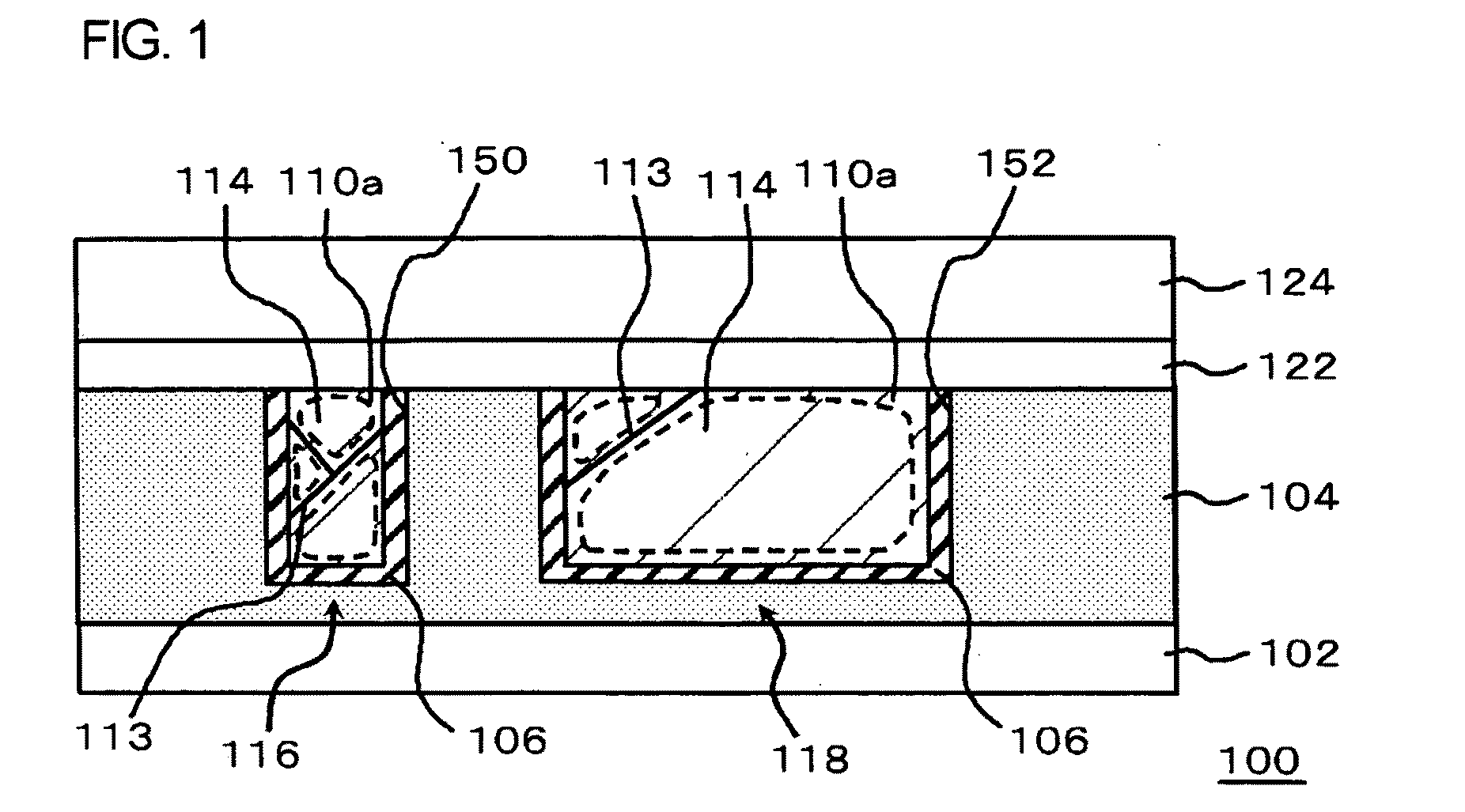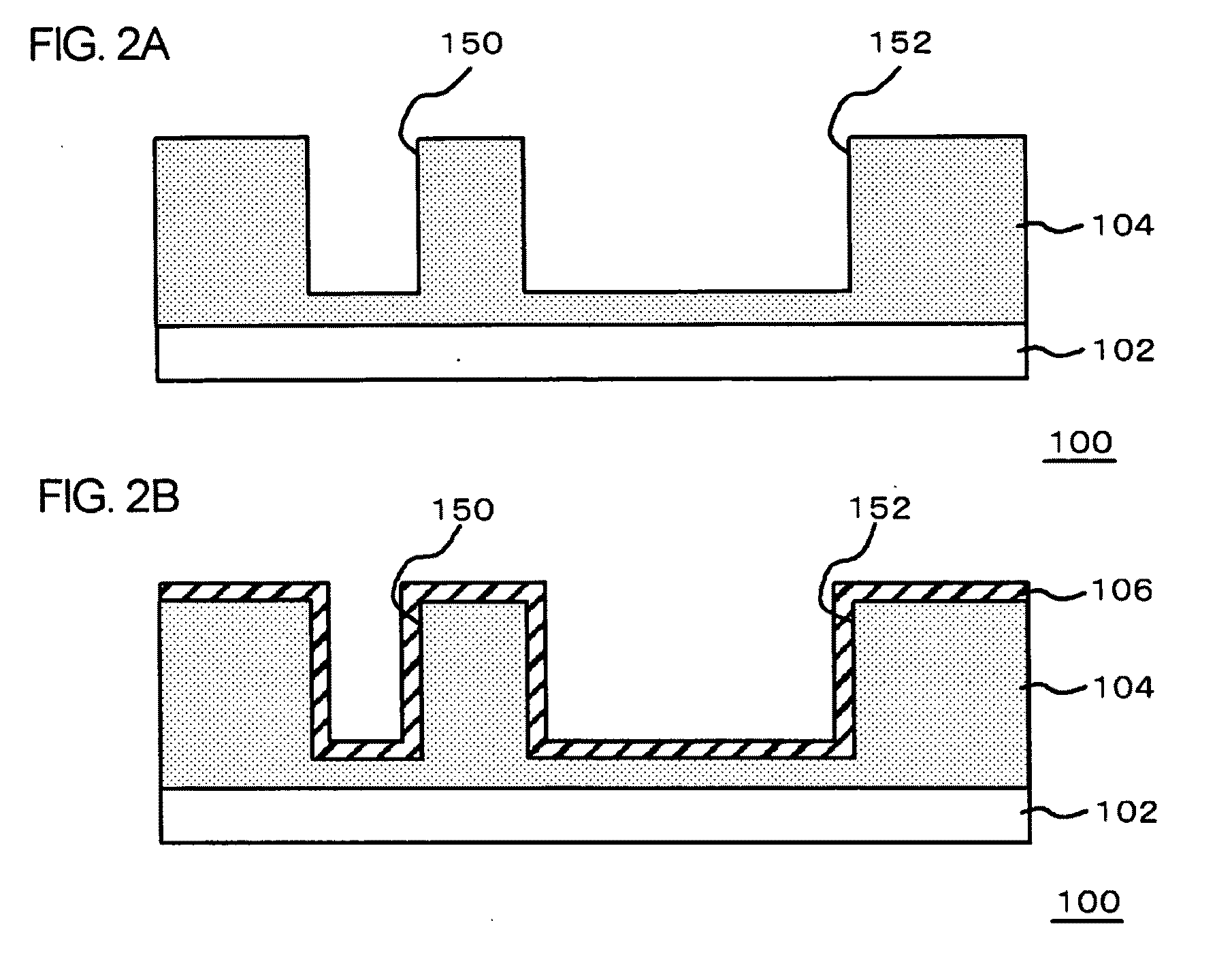Method of manufacturing semiconductor device and semiconductor device
a manufacturing method and semiconductor technology, applied in semiconductor devices, semiconductor/solid-state device details, electrical apparatus, etc., can solve the problems of stress migration, inability to control a region having a high concentration of impurity metals to be formed at the desired place, and the interconnect resistance may increase, so as to suppress an increase in the resistance of the interconnect. , the effect of improving the stress migration lifetim
- Summary
- Abstract
- Description
- Claims
- Application Information
AI Technical Summary
Benefits of technology
Problems solved by technology
Method used
Image
Examples
example 1
[0058]The semiconductor device was manufactured by the manufacturing procedure of the semiconductor device described with reference to FIGS. 1 to 5B. FIG. 7 is a cross-sectional view (BF-STEM image) illustrating the configuration of the narrow-width interconnect 116. Herein, the interconnect width was set to 50 nm. A stacked film (total film thickness of 7 nm) of a Ta film and a TaN film was used as the barrier metal film 106. In addition, Al was used as the impurity metal. The content of Al was set to 0.5 wt %. The film thickness of the seed alloy film 110 was set to 5 nm. The first annealing condition was set to a processing time of thirty seconds and a processing temperature of 350° C. In addition, the second annealing condition was set to a processing time of thirty minutes and a processing temperature of 350° C.
[0059]The elemental analysis was performed by the energy dispersive X-ray spectrometer (EDX), using the interconnect surface surrounded by the dashed line “1” and the ce...
example 2
[0063]Similarly to Example 1, the semiconductor device was manufactured by the manufacturing procedure of the semiconductor device described with reference to FIGS. 1 to 5B. FIG. 8 is a cross-sectional view (BF-STEM image) illustrating the configuration of the narrow-width interconnect 116. The condition was the same as Example 1. The darker shaded area in the interconnect metal film 114 of FIG. 8 is a place in which the grain boundary 113 is distributed. “3” and “4” of FIG. 8 exist in the grain boundary 113. “5” exists in the inside of the grains of the interconnect metal film 114.
[0064]The elemental analysis of the cross section of the narrow-width interconnect 116 was performed by the EDX. The elemental analysis was performed using the grain boundary indicated by “3”, the grain boundary indicated by “4”, and the inside of the grains indicated by “5” of FIG. 8, respectively, as the analysis points. The respective content of Al to all the elements in the respective analysis regions...
PUM
| Property | Measurement | Unit |
|---|---|---|
| temperature | aaaaa | aaaaa |
| temperature | aaaaa | aaaaa |
| processing temperature | aaaaa | aaaaa |
Abstract
Description
Claims
Application Information
 Login to View More
Login to View More - R&D
- Intellectual Property
- Life Sciences
- Materials
- Tech Scout
- Unparalleled Data Quality
- Higher Quality Content
- 60% Fewer Hallucinations
Browse by: Latest US Patents, China's latest patents, Technical Efficacy Thesaurus, Application Domain, Technology Topic, Popular Technical Reports.
© 2025 PatSnap. All rights reserved.Legal|Privacy policy|Modern Slavery Act Transparency Statement|Sitemap|About US| Contact US: help@patsnap.com



